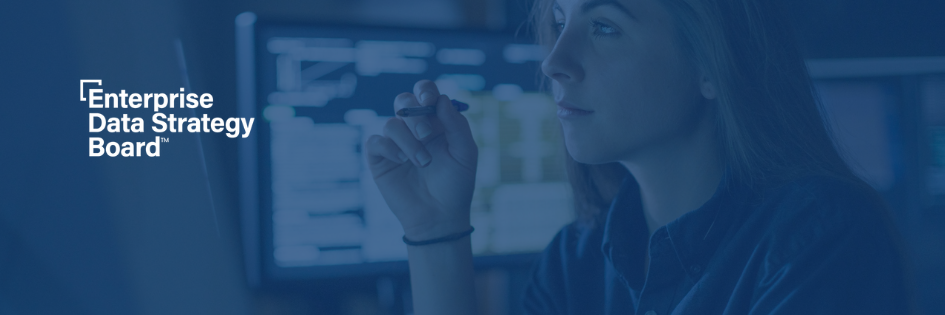Highlights:
- Data democratization can enable non-technical employees to make data-driven strategic decisions, break down silos, increase efficiency, and improve consumer satisfaction.
- Democratization is about more than just access with comfortability working with data, and your employee’s level of data literacy will play a large role.
- You need to employ the right tools to make democratization work — primarily, tools for product analytics and business intelligence.
Named by Gartner as one of the “Top 10 Strategic Technology Trends,” data democratization has been dubbed the unsung hero behind the success of some of today’s biggest companies.
In fact, a recent Harvard Business Review and Google Cloud report confirmed that 97% of surveyed industry leaders said democratizing access to data and analytics is crucial to enterprise success.

As defined by Collibra, data democratization is “when an organization makes data accessible to all employees and stakeholders and educates them on how to work with data, regardless of their technical background.”
In their article, Collibra reflects on a time before widespread democratization, when IT owned a majority of a company’s data and employees could spend significant time searching for the right data and waiting for the green light to use it.
By making data more accessible, an enterprise can enable employees — whether they be in sales, marketing, human resources, or customer service — to make strategic decisions, increase efficiency, drive profits, and improve consumer satisfaction.
If democratization has the ability to break down silos and drive revenue, then why are so many enterprises still taking an ad hoc approach? Some leaders fear that providing non-technical employees access to data could invite security risks and the misuse of data.
As a data strategy leader, how do you balance accessibility with accountability, and ensure that democratization does not undermine your data quality standards? Let’s dive in.
Improving data literacy
In an article for Towards Data Science, Arpit Choudhury, Astorik Founder, suggests that data democratization is about more than just access but employees’ level of confidence in working with and discussing data.
But recent studies including Accenture’s The Human Impact of Data Literacy report have demonstrated that a majority of employees are actually uncomfortable working with data.
It’s clear that your workforce’s level of data literacy can either serve as a stepping stone or a setback towards democratization, but scaling an effective data literacy program can be a journey in itself.
During an Enterprise Data Strategy Board panel, Chris Gifford, Chief Data and Analytics Officer at USAA, advised leaders on this journey to find their “data influencers” across the enterprise.
Gifford described these employees as those who have a strong appetite for data or “closeted data nerds.” USAA successfully leveraged their enthusiasm to kick-start educational discussions around data through sessions called Let’s Talk Data. These hour-long discussions cover topics such as cloud migration and see between 400 and 600 USAA employees in attendance.
During the same panel, Chris’ peer and fellow Enterprise Data Strategy Board Chair Jennifer Battista, Vice President of Data Strategy at Shaw Communications, said that data literacy plays a very important role at her enterprise.
Jennifer said that she believes strongly in learning by doing and that real growth in data literacy comes from providing employees with opportunities to do the work.
“It’s very hard to learn something just by hearing about it or just by seeing it,” Jennifer said.
Furthermore, everyone learns differently — whether it be formal data courses, boot camps, workshops, or self-paced training, it can be helpful to employ a variety of training tactics.
Notably, Arpit Choudhury highlighted in his article how different employees will also require different levels of data knowledge.
The data skills marketing requires to create more engaging content can look vastly different from the skills customer service might need, and based on the varying needs, enterprises should also be prepared to provide a wide variety of tools.
Using the right tools
Data democratization can’t be achieved without investing in the right set of tools and platforms.
Different teams will need to work with data in different ways — as a result, they’ll need a diverse set of tools. Arpit suggested that the product and growth teams alone could require six separate tools to do their jobs well.
At the very least, he said enterprises working towards democratization need to invest in tools for a data warehouse, business intelligence (BI) tool, data integration tool, and reverse ETL tool. Simply put, companies need both a product analytics tool and BI tool.
“That does seem overwhelming but it is the future — embrace it or be left behind,” he said. “It is crucial to invest in a set of tools that enable individuals to work with data efficiently and make data-led decisions without relying on others.”
Supporting the ongoing democratization process
If implemented successfully, data democratization can provide companies with a competitive edge, but it will be an ongoing process. Training and data literacy alone is a continuous endeavor within this ever-evolving industry.
Getting democratization right can be crucial in becoming a more data-driven company, and it can be helpful to leverage tactics from data leaders who are making it work.
Leaders in the Enterprise Data Strategy Board are coming together on November 9 at 3 PM ET to discuss data democratization — the standard they’re using, how they’re proving value, and addressing common pitfalls.
Normally, these conversations aren’t available to those outside the community, but the community is welcoming a special group of guest data strategy leaders to join.
Interested in learning more about the Enterprise Data Strategy Board?
Get in touch


